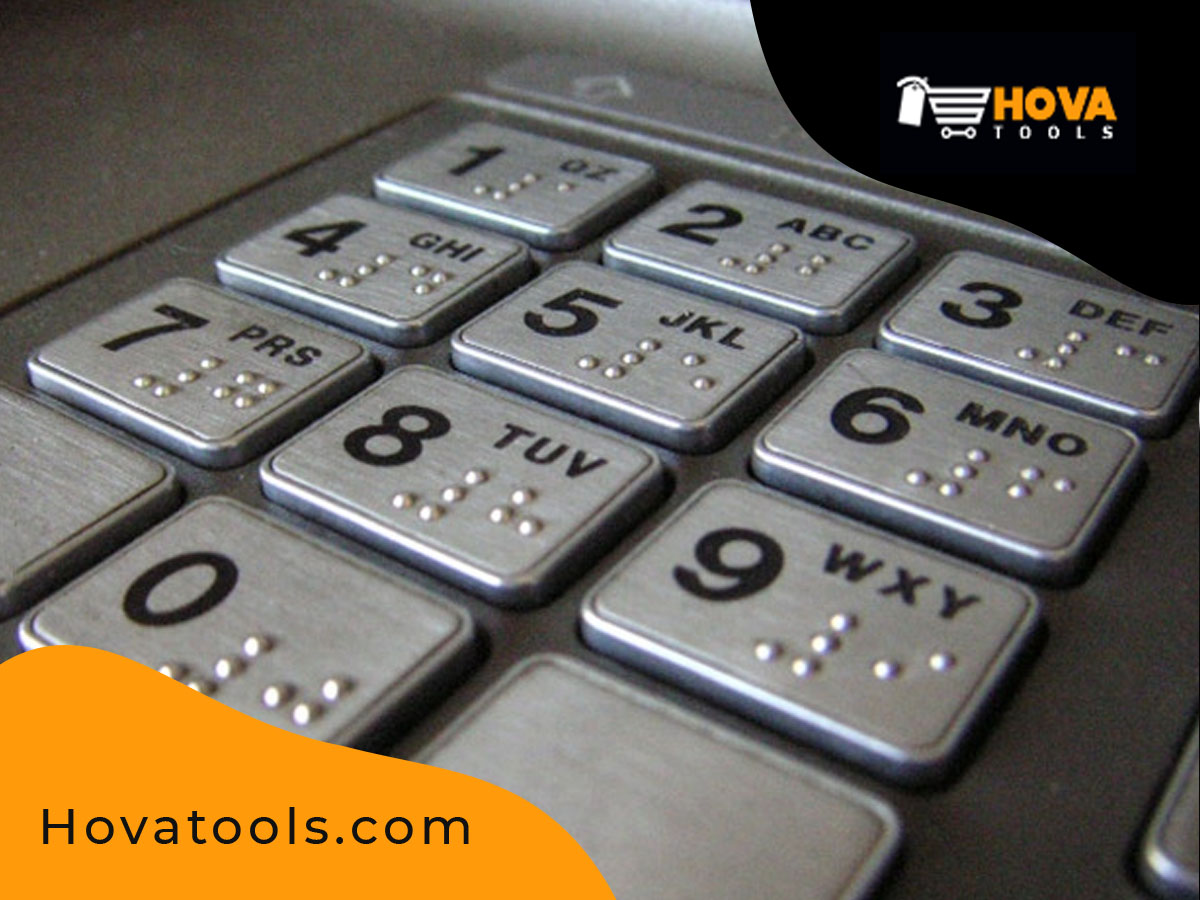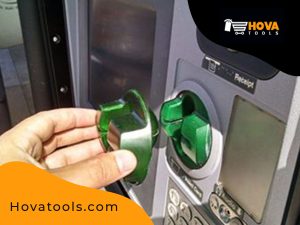Visa Pin Cracker Method Updated for New Users
This is the latest visa pin cracker method.
Have you ever wondered what would happen if you lose your credit or debit card and someone finds it? Would this person be able to withdraw cash from an ATM guessing, somehow, your PIN? Moreover, if you were who finds someone’s card would you try to guess the PIN and take the chance to get some easy money? Of course, the answer to both questions should be “no”. This work does not deal with the second question, it is a matter of personal ethics. Herewith I try to answer the first question.
All the information used for this work is public and can be freely found on the Internet. The rest is a matter of mathematics and programming, thus we can learn something and have some fun. I reveal no secrets. Furthermore, the aim (and final conclusion) of this work is to demonstrate that PIN algorithms are still strong enough to provide sufficient security. We all know technology is not the weak point.
This work analyzes one of the most common PIN algorithms, VISA PVV, used by many ATM cards (credit and debit cards) and tries to find out how resistant is to PIN guessing attacks. By “guessing” I do not mean choosing a random PIN and trying it in an ATM. It is well known that generally we are given three consecutive trials to enter the right PIN, if we fail ATM keeps the card. As VISA PIN is four digits long it’s easy to deduce that the chance for a random PIN guessing is 3/10000 = 0.0003, it seems low enough to be safe; it means you need to lose your card more than three thousand times (or losing more than three thousand cards at the same time. Until there is a reasonable chance of losing money.
What I really meant by “guessing” was breaking the PIN algorithm so that given any card you can immediately know the associated PIN. Therefore this document studies that possibility, analyzing the algorithm and proposing a method for the attack. Finally, we give a tool that implements the attack and presents results about the estimated chance to break the system. Note that as long as other banking security-related algorithms (other PIN formats such as IBM PIN or card validation signatures such as CVV or CVC) are similar to VISA PIN, the same analysis can be done yielding nearly the same results and conclusions.
VISA PVV algorithm
One of the most common PIN algorithms is the VISA PIN Verification Value (PVV). The customer is given a PIN and a magnetic stripe card. Encoded in the magnetic stripe is a four-digit number, called PVV. This number is a cryptographic signature of the PIN and other data related to the card. When a user enters his/her PIN the ATM reads the magnetic stripe, encrypts, and sends all this information to a central computer. There a trial PVV is computed using the customer-entered PIN and the card information with a cryptographic algorithm. The trial PVV is compared with the PVV stored in the card, if they match the central computer returns to the ATM authorization for the transaction. See in more detail.
The description of the PVV algorithm can be found in two documents linked on the previous page. In summary, it consists in the encryption of an 8-byte (64-bit) string of data,
called Transformed Security Parameter (TSP), with DES algorithm (DEA) in Electronic Code Book mode (ECB) using a secret 64-bit key. The PVV is derived from the output of the encryption process, which is a 8-byte string.
The four digits of the PVV (from left to right) correspond to the first four decimal digits (from left to right) of the output from DES when considered as a 16 hexadecimal character (16 x 4 bit = 64 bit) string. If there are no four decimal digits among the 16 hexadecimal characters then the PVV is completed taking (from left to right) nondecimal characters and decimalizing them by using the conversion A->0, B->1, C->2, D->3, E->4, F->5. Here is an example:
Output from DES: 0FAB9CDEFFE7DCBA
PVV: 0975
The strategy of avoiding decimalization by skipping characters until four decimal digits are found (which happens to be near all the times as we will see below) is very clever. Because it avoids an important bias in the distribution of digits which has been proven to be fatal for other systems, although the impact on this system would be much lower. See also a related problem not applying to VISA PVV.
The TSP, seen as a 16 hexadecimal character (64-bit) string, is formed (from left to right) with the 11 rightmost digits of the
PAN (card number) excluding the last digit (check digit), one digit from 1 to 6 which selects the secret encrypting key, and finally the four digits of the PIN. Here is an example:
PAN: 1234 5678 9012 3445
Key selector: 1
PIN: 2468
TSP: 5678901234412468
Obviously, the problem of breaking the VISA PIN consists in finding the secret encrypting key for DES. The method for that is to do a brute-force search of the key space. Note that this is not the only method, one could try to find a weakness in DEA, many tried, but this old standard is still in wide use (now been replaced by AES and RSA, though).
The key selector digit was very likely introduced to cover the possibility of a key compromise. In that case, they just have to issue new cards using another key selector. Older cards can be substituted with new ones or simply the ATM can transparently write a new PVV (corresponding to the new key and keeping the same PIN) the next time the customer uses his/her card. For the shake of security, all users should be asked to change their PINs. However it would be embarrassing for the bank to explain the reason, so very likely they would not make such a request.
Preparing the attack
A brute force attack consists in encrypting a TSP with a known PVV using all possible encrypting keys and comparing each obtained PVV with the known PVV. When a match is found we have a candidate key. But how many keys do we have to try? As we said above the key is 64-bit long, this would mean we have to try 2^64 keys. However, this is not true. Actually, only 56 bits are effective in DES keys
because one bit (the least significant) out of each octet was historically reserved as a checksum for the others; in practice, those 8 bits (one for each of the 8 octets) are ignored.
Therefore the DES key space consists of 2^56 keys. If we try all these keys will we find one and only one match, corresponding to the bank’s secret key? Certainly not. We will obtain many matching keys. This is because the PVV is only a small part (one-fourth) of the DES output. Furthermore, the PVV degenerates because some of the digits (those between 0 and 5 after the last, seen from left to right, and digit between 6 and 9) may come from a decimal digit or from a decimalized hexadecimal digit of the DES output. Thus many keys will produce a DES output that yields the same matching PVV.
Then what can we do to find the real key among those other false positive keys? Simply we have to encrypt a second different TSP, also with known PVV,
but using only the candidate keys which gave a positive matching with the first TSP-PVV pair. However, there is no guarantee we won’t get again many false positives along with the true key. If so, we will need a third TSP-PVV pair, repeat the process, and so on.
Before we start our attack we have to know how many TSP-PVV pairs we will need. For that, we have to calculate the probability for a random DES output to yield a matching PVV just by chance. There are several ways to calculate this number and here I will use a simple approach easy to understand but requires some background in the mathematics of probability.
Henceforth, WE WISH TO ANNOUNCE THAT OUR SERVICES ARE NOT AVAILABLE TO PEOPLE FROM NIGERIA AND INDIA. THESE ARE USELESS TIME WASTERS AND THIEVES TRYING TO BEG OR SCAM US OF OUR PRODUCTS. OUR SERVICES ARE NOT FREE AND PAYMENT IS UPFRONT
A LOT OF FOOLS FROM NIGERIA AND INDIA. on the off chance that YOU DON’T TRUST TO USE OUR SERVICES, DON’T CONTACT US AS WE HAVE NO FREE SERVICE
CONTACT US FOR PURCHASE/INQUIRIES, WE RESPOND ALMOST INSTANTLY
HI BUYERS, WE ARE A PROFESSIONAL CARDING AND HACKING TEAM. HOVATOOLS HAS BEEN AROUND SINCE THE TIME OF EVO MARKET, ALPHABAY, WALLSTREET MARKET AND MORE. WE REMAIN STRONG AND RELIABLE IN THE INDUSTRY, ALWAYS PROVIDING YOU WITH THE BEST QUALITY TOOLS TO HELP YOU MAKE MONEY AND MAXIMIZE PROFIT IN THE FRAUD GAME.
TO GET STARTED, YOU CAN VISIT OUR ONLINE SHOP/STORE TO BUY EVERYTHING YOU NEED TO START CASHING OUT. AT THE SHOP YOU GET Accounts & Bank Drops CVV & CARDS DUMPS PERSONAL INFORMATION & SCAN.
BANK HACKING SOFTWARE – WIRE/ACH DARKWEB MONEY TRANSFER HACKERS
Buy Fresh Credit Cards for Carding, BIN LIST Buy Bank Login, RDP, Buy Hacked Paypal accounts. Contact us to buy all tools and carding software. CLICK HERE TO VISIT OUR SHOP
Buy Socks 5, Email Leads, Buy Latest CC to Bitcoin Cashout Guide, Buy Hacked Zelle transfer , Western Union Money Transfer Hack, Buy Hacked Money Transfer service to your bank account.
Enroll for Paid private Carding Class.




